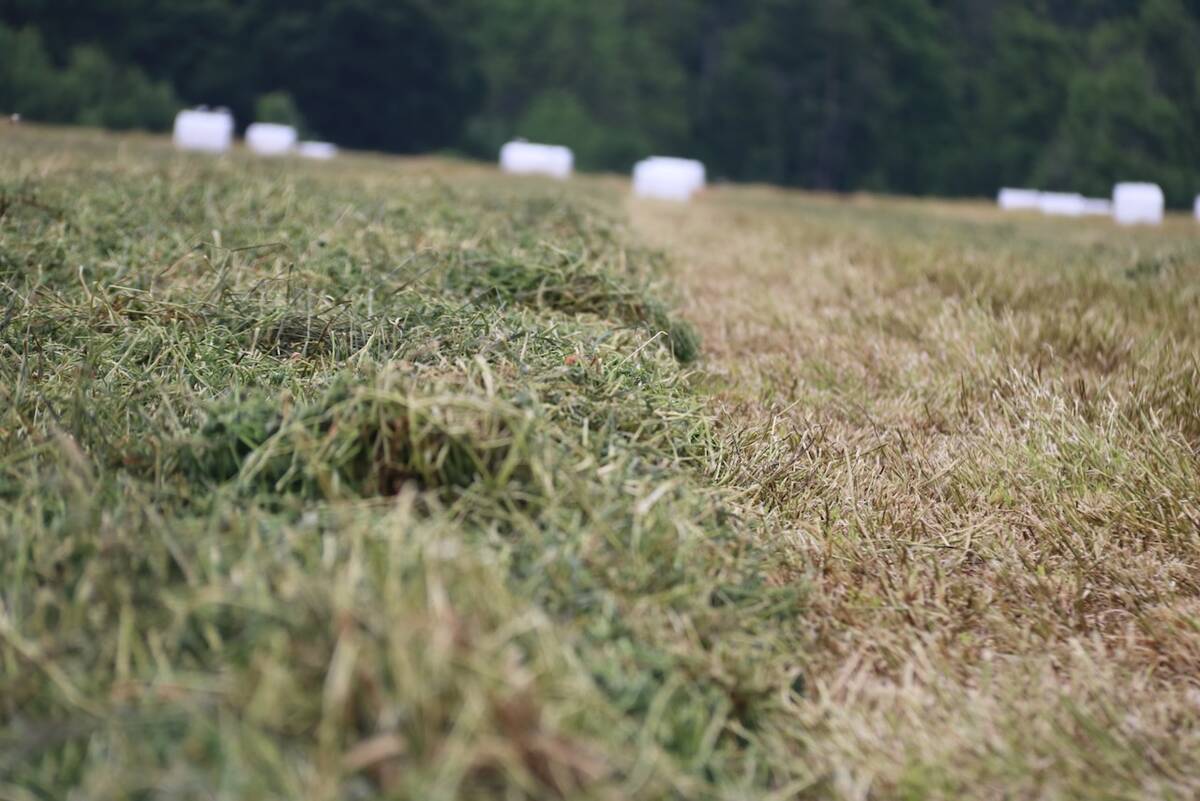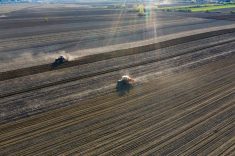Production forecasts and estimates are a vital part of the business of marketing crops. The value of traded grains can move substantially from one day to the next on the basis of weather: drought, floods, frost, colder than normal, wetter than normal or other factors. Crop estimate reports can also cause large price swings.
Last summer, an August corn crop estimate put out by the United States Department of Agriculture (USDA) caused consternation when corn yields were estimated down by 1.3 per cent — a huge drop that sparked an immediate rally in the market. That same report also showed a 4.3 per cent drop in estimated soybean yield, an even greater shift from previous reports than the corn shift. The soybean market reaction was also substantially greater. The move in the market was large enough that it caused confusion and even comments that USDA had perhaps changed its process in making crop estimates, but that was not the case.
Read Also

New high-performance forage training program to launch in 2026
A new Canadian Forage and Grasslands Asssociation high-performance forage program will be a resource for farmers, agronomists and others in the forage sector.
“The August 2013 crop estimates were set in the identical way as past August numbers,” explains Don Frahm, senior vice president and chief economist at Informa Economics Inc. Frahm is based in Memphis, Tennessee and has almost 40 years of experience in the business.
The USDA process
The USDA has a prescribed path that it follows each month in estimating major field crops. “USDA produces estimates for corn, for instance, starting in February. From February to July, the estimates are purely analytical, calculated with no direct information of the crop in the field,” explains Frahm.
“Come August, there’s a change in process. The National Agricultural Statistical Service (NASS), an agency within USDA, starts collecting direct information about the crop from producers and other sources to produce yield estimates.” NASS goes on to produce estimates in September, October and November, with the last estimate coming in early January for corn.
NASS’s estimates are in real time. Season-ending stocks are estimated at the end of the season; September stocks are estimated September 1 and so on. NASS estimates winter wheat production in May, June, July and August.
“The process NASS undertakes is a very regimented, scheduled public process and if there were any changes to be considered or implemented there would be a lot of forewarning to the industry,” says Frahm.
“The information generated by NASS improves significantly as the estimation season progresses. They use a two-pronged approach and marry the data together to come up with their reports,” says Frahm. The two independent approaches include a survey of several thousand farmers, with samples from various farm sizes and locations. The second approach is NASS’s Objective Yield Estimate. This involves about two thousand yield plots randomly chosen in the major states for a particular crop. These yield plots are within farmers’ fields. During the growing season, enumerators go out to these locations and make specific counts which are used to make yield estimates.
“The objective yield process focuses on a simple equation — fruit weight times the number of fruit minus harvest loss equals yield,” explains Frahm. “Towards the end of the season this is a very accurate measure of yield, but very early in the season when the enumerators have to rely on estimates of numbers of fruit and fruit weight dominated by past year’s averages, it’s not as useful.”
The esimates
There are always mutterings on blogs and in coffee shops that production estimates are self-serving: keeping commodity praices low, keeping food prices cheap or to impact subsidies to farmers. Frahm does not agree with this. “In my experience after almost 40 years in this business, the USDA estimation process is 110 per cent objective,” he says. “It is a great error for a farmer to think the USDA estimates are not objective and intended to accomplish some market reaction. But just as farmers cannot accurately predict their yield until the crop is harvested, so too the same sort of preliminary character applies to USDA yield estimates early in the season. From our experience, there is a very large step toward quantifying actual production in the third report in the estimation season, so the October report for corn or the July report for winter wheat.”
Where do companies like Informa Economics Inc. fit into the picture when it comes to estimates of production and yield, and what is the value proposition for their clients? “We think there are flaws in the process USDA uses, but certainly not in their intent. At Informa Economics we do things a bit differently,” says Frahm. “Additionally, we are free to share our opinions on events hourly, weekly or however often we deem necessary, but the USDA is locked into once monthly communiques in their regimented process.”
Because of the fall government shutdown caused by political stalemate, the USDA and other government departments were on furlough in October. The October 11 corn report did not come out as planned.
“Not only did the report not come out, there is information being lost that would be used to produce the October estimates, and also information being lost that would be used in the November estimates. Specifically, the grain samples have to be gathered from the objective yield plots prior to the farmer going in and harvesting the field, and that is not happening as enumerators are on furlough,” explains Frahm. “We don’t know yet how that will impact the accuracy of the estimates in the reports to come, but it will have impact.” †














